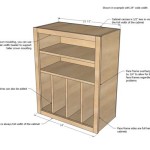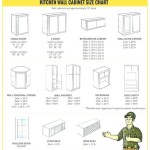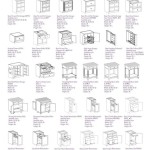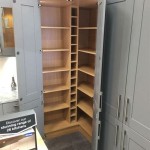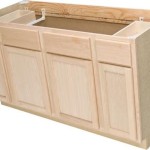The Ultimate Guide to Kitchen Cabinet Legs: Choosing the Right Style and Function
Kitchen cabinet legs play a crucial role in the overall aesthetics and functionality of your kitchen space. They provide support, elevation, and a touch of style to your cabinets, making them an essential design element to consider when planning your kitchen. Whether you're renovating an existing kitchen or building a new one from scratch, choosing the right cabinet legs can make all the difference.
Types of Kitchen Cabinet Legs
Various types of kitchen cabinet legs are available, each with its unique style and advantages.
- Block Legs: Solid, square-shaped legs that offer a traditional and sturdy look.
- Bun Feet: Curved legs that create a classic and elegant appearance.
- Cabriole Legs: Graceful, S-shaped legs that exude an antique charm.
- Claw and Ball Feet: Decorative legs featuring a lion's claw griping a ball, adding a touch of opulence to your kitchen.
Choosing the Right Style
When selecting cabinet legs, consider the overall style of your kitchen.
- Traditional: Block legs, bun feet, and claw and ball feet complement classic and traditional kitchen designs.
- Modern: Sleek, metallic legs in chrome, stainless steel, or black finish enhance modern and contemporary kitchens.
- Rustic: Natural wood legs in oak, maple, or walnut bring warmth and character to rustic kitchens.
Height and Functionality
Beyond aesthetics, cabinet legs serve a functional purpose. Determine the desired cabinet height based on your personal preferences and kitchen layout.
- Standard Height: 4-6 inches, providing ample clearance for vacuuming and cleaning floors.
- Taller Height: 8-10 inches, creating visual interest and elevating the cabinets for an airy feel.
- Adjustable Legs: Allow for precise adjustments to level cabinets and compensate for uneven flooring.
Material and Durability
Kitchen cabinet legs endure considerable weight and wear. Choose a durable material that can withstand daily use:
- Wood: Classic and versatile, available in various colors and finishes, but can be susceptible to scratches and moisture.
- Metal: Strong and durable, available in a range of finishes, including chrome, stainless steel, and brass.
- Plastic: Lightweight and budget-friendly, but may not be as durable as wood or metal.
Installation Tips
Installing kitchen cabinet legs is a relatively straightforward task. However, proper planning and careful execution are essential to ensure a secure and stable foundation.
- Determine the correct leg placement and mark the holes using a level.
- Attach the legs using the provided screws or bolts, ensuring they are securely fastened.
- If necessary, adjust the leveling feet to ensure the cabinet stands level and does not wobble.
- Consider adding toe kicks to cover the exposed space between the cabinet legs and floor, creating a more finished look.
By considering these essential aspects of kitchen cabinet legs, you can make an informed decision that enhances the aesthetics and functionality of your kitchen. Whether you opt for traditional or modern styles, the right cabinet legs will provide support, elevation, and a touch of style that will transform the look and feel of your kitchen space.

Fronts Handles And Tops Decoholic Kitchen Cabinets With Legs Base

Purchase Kitchen Cabinet Legs

Pros And Cons Of Freestanding Kitchen Cabinets In Modern Times

Free Standing Kitchen Units Stand Freestanding
4 Pcs Adjustable Stainless Steel Cabinet Metal Legs Kitchen Feet Round Holder


Warning On Kitchen Cabinet Legs

Kitchen Cabinets With Legs Or Arched Aprons

It Kitchens Cicely 150mm Black Plain Cabinet Legs Pack Of 2 Diy At B Q

Why Buy Our Samson Adjustable Kitchen Cabinet Legs
Related Posts

